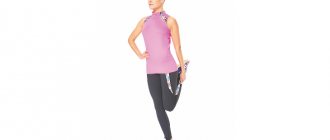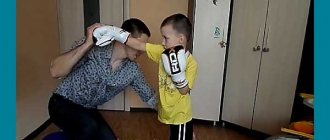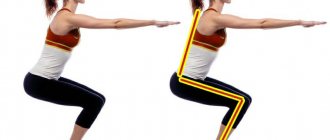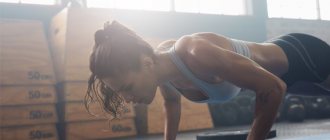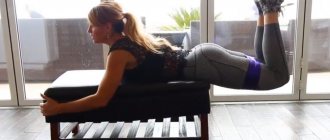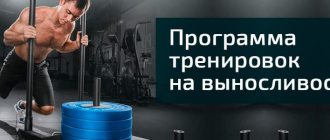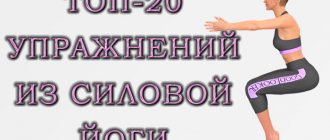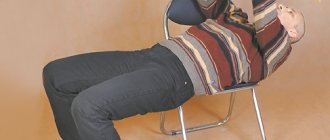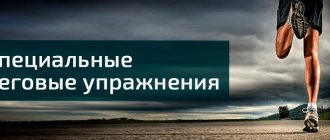Full text of the article:
The introduction of self-isolation has significantly affected the daily lives of many people. Suddenly deprived of the opportunity to lead an active life outside the home, people began to learn to live on limited square meters. The house has become a place for relaxation, creativity and sports. And if it’s generally clear with creativity, here it all comes down to imagination and abilities, then it’s worth talking about playing sports at home
separately.
Many people preferred self-training at home even before the closure of fitness centers. The reasons are different. Some people don’t like to exercise in the company of strangers, some are embarrassed by their weaknesses and are afraid of seeming weak and clumsy, some consider a gym membership an unnecessary expense, and some simply don’t have time to go to fitness clubs. In any case, being able to study properly at home is useful even as an additional load.
What might you need to train at home?
For home workouts you don’t need almost anything except desire, time and a little space, but it is important to understand which exercises to choose for self-training so as not to harm your health and achieve the desired results. As for additional attributes, you shouldn’t rush to a sports store to buy an exercise bike or treadmill; prepare a minimum set
:
- gymnastic mat;
- dumbbells;
- fitness bands.
Signalman
Works the muscles of the legs, buttocks, abdomen, lower back, back and shoulder girdle.
Stand up as for the previous exercises, only now put your hands on your belt. The stomach is pulled in. Bending your leg, raise your right knee, preferably to waist level (if that doesn’t work, to the level you can).
At the same time, raise your left hand up and your right hand to the side. If you can’t keep your balance, lean on something with your right hand and raise only your left hand. The arms are tense, the fingers are connected to each other and extended. Lower your leg and return your hands to your waist. Do it the other way.
Article on the topic
How to get ready for independent training? 7 tips from a trainer Repeat 20 times on each side.
What is the best time to train?
People who have developed the healthy habit of doing exercises in the morning cannot imagine starting their day without squats, push-ups, bending over or stretching. True, among them there are usually more “larks”, because “night owls” can force themselves to get up a few minutes earlier only by force of will, but evening workouts are much more pleasant for them. Thus, if you are not going to break your routine and your nature, then exercise when it is convenient for you
.
There is also a compromise option: do a small set of dynamic exercises in the morning to help you cheer up, and in the evening take time for stretching, yoga and other exercises that will help relieve the stress of the day and prepare for a relaxing evening.
Waist exercises
For most people losing weight, an important indicator is waist size. This part of the body acquires the necessary shape after performing the following exercises.
Bike
Lie on the floor, you can put your hands behind your head, squeezing them into a lock, or you can put them parallel to your body. Raise your legs up and start doing movements similar to what a person does when riding a bicycle: alternately bend your knees and pull your legs closer to your chest, making amplitude movements.
Leg movements in the air
Take a lying position, stretch your arms in different directions, lift both legs up. Press your legs together and begin to swing them together in one direction and then the other. Do 2-3 sets of 20 repetitions.
Don't forget to warm up
Warm-up is no less important than the workout itself. It helps the body to properly prepare for upcoming stress, even if it is short-term. In addition, warming up allows you to avoid injuries that can occur if the muscles were not toned and “warmed up” before starting the exercises. 10-15 minutes for warm-up
.
Warm-up exercises should be performed at an average pace
, without sudden movements and jerks. Remember that not only physical fitness is important, but also morale, so to warm up, turn on your favorite music or think about something pleasant. We offer a set of simple exercises for self-training at home.
Raise your knees to your elbows
This simple exercise is performed from a standing position. Before starting the exercise, stand straight, place your feet shoulder-width apart to make it easier to maintain balance, then begin to raise your knees and at the same time tilt your body so that the knee of one leg touches the elbow of the opposite arm. There is no need to rush, the pace should be comfortable.
The exercise is performed in several approaches of 1-2 minutes each. It is recommended to do 5 sets in total with a 30-second break between them. The exercise is aimed at strengthening the heart and respiratory system.
Let's get into plank position
Another universal exercise. At first glance, nothing special, but if you do the “plank” correctly, you can strengthen the muscles of the arms, legs and abdomen. The versatility of the exercise is that it can be performed without special training and equipment, and the load can be easily adjusted by the duration of each approach.
When doing the plank, you need to remember that your position must correspond to the name of the exercise. The emphasis is on the forearms and toes. The elbows should be positioned strictly under the shoulders, and the hips should not fall or rise above the level of the head. You can stand in the plank as long as you have the strength to maintain the correct position. The exercise is also recommended to be performed in several approaches with half-minute breaks between them.
Strengthening your back
One of the exercises to strengthen the back muscles is performed from a lying position. You need to lie on your stomach, preferably using a gymnastic mat for this, and begin to bend your back. You cannot push off the floor with your hands; your hands should be bent at the elbows and touch your ears. The lower part of the body along with the legs should remain on the floor. The upper body should be lifted off the floor as much as possible, and then smoothly lowered back.
You should not “fall” on the floor, this will reduce the effectiveness of the exercise, since in this case you will only work “up”, and in the first case also “down”. It would be optimal to perform 5 approaches and 15-20 repetitions in each one in one workout.
Squat
A basic exercise that everyone knows, but not everyone knows how to perform it correctly. Before starting the exercise, stand straight, place your feet shoulder-width apart, and place your feet slightly apart. Start squatting. You need to squat as deep as you can. In this case, you need to make sure that your heels do not lift off the floor and that your body does not lean forward. You can squat as many times as your physical fitness allows. Squats primarily help strengthen the muscles of the legs, as well as the muscles of the buttocks.
Stretching the muscles of the back and sides
This exercise is performed from the “baby pose”. To take the starting position, you need to kneel down and sit on your heels, and then smoothly and slowly lower your stomach to the front of your thighs. At the same time, you need to stretch your arms forward as far as possible to stretch the muscles. At the farthest point you need to linger for 20-30 seconds and then return to the starting position. With this exercise you can effectively stretch the muscles of your back, shoulders, and sides.
Squatting with a chair
For this exercise you will need a simple prop: a chair. You need to turn your back to the chair and rest your hands on the seat. In this case, your legs should be about half a meter from the chair so that the main emphasis falls on your hands. This exercise requires you to actually do a push-up: bend your elbows, lower your hips, and then straighten your arms. As a result, you can strengthen your triceps.
Doing backward lunges
This exercise should be started when the muscles are already warmed up. You will need a little more space to avoid accidental injuries. Starting position: stand straight, spread your arms to the sides to maintain balance. Take a big step back with one leg and bend the other leg at the knee. Get down as low as possible, then push off with your back leg to return to the starting position. If you do everything correctly, then you should not move relative to the starting position. After each lunge, there is an alternating change of legs. In general, the exercise is useful for developing coordination and balance.
Checking the “King’s thrust”
Another exercise on our list that helps strengthen the muscles of the legs and buttocks. Performed from a standing position. One leg should be taken back and placed on the toe, the center of gravity should be transferred to the front leg. Then begin to slowly lean forward, bending your leg at the knee, until you can touch the floor with your fingers. When the goal is achieved, you need to return to the starting position by straightening your leg. The exercise should be performed 10-15 times in one approach. There can be several approaches, but you must take at least short breaks between them.
Let's get on the bridge
A very famous exercise to strengthen the buttocks is performed from a supine position. The feet need to be pressed firmly to the floor to better maintain balance, fix the knees above the heels and begin to slowly lift the hips off the floor, raising them to a comfortable height. The main thing in this exercise is not the height of the lift or the speed of its execution, but correctness. It is recommended to perform 5 approaches and 10-15 exercises in each of them in one workout.
Introducing ourselves as Superman
You can finish your workout with a superhero exercise. You won't have to fly, although it all depends on your imagination. To perform the exercise, you need to get down on all fours, and then alternately lift and stretch forward one arm and the opposite leg. Don't rush, so as not to lose your balance. For this exercise, one approach is enough, but you will have to perform it 30-40 times. The muscles of the abdomen, buttocks and back will be involved.
Lateral walking
Works the muscles of the lateral and inner thighs, buttocks and abdomen.
Stand up as for the previous exercise, do not forget to draw in your stomach and move your bent arms. Bend your knees slightly while placing emphasis on your heels. Without straightening your legs, take a fairly wide step with your right foot to the right and place your half-bent left leg against it.
Take as many steps to the right as space allows, then take a step to the left. You can straighten your legs only when you're done!
Take 30 steps with each leg.
Chest exercises
These exercises strengthen the muscular corset of the chest and allow you to tighten your bust.
Burpee
This exercise is an effective gymnastic complex and consists of several stages.
- Stand up straight, straighten your back, lower your arms along your body;
- Perform a squat, but do not straighten back up, but place your hands on the floor;
- From this position, jump your legs back and take the position from which you do push-ups;
- Now, also jump, pull your legs back and take the position from point 2;
- Jump up with your arms raised.
Palm clenching
Place your hands in front of your chest, bring them together and clasp them in your palms. The fingers should be pointing upward. Stay in this position for a while, applying maximum effort. Then open your palms, rest and try again.
Exercise Tips
Some tips for beginners. They will help you avoid unpleasant injuries and make your workouts much more effective.
- Don't forget about warm-up exercises. Before each lesson, you should warm up your muscles and prepare your body for stress;
- Take breaks between approaches, do not try to take exercises in a hurry and quickly complete the workout. This will lead to fatigue and muscle injuries;
- Try to do the exercises correctly. Follow the technique. This way you will definitely protect yourself from injuries and get the greatest effect from your training;
- Drink water between sets to avoid dehydration;
- After exercise, you should not take a full meal, this will negate all efforts to burn fat;
- Read more about diets for weight loss.
- Combine exercises with cardio training - running, swimming, walking or cycling. Exercise will help you lose weight quickly at home, but the greatest effect can be achieved when combined with proper nutrition and other types of activity.
Side exercises
These exercises will help remove fat deposits from the sides, and also pump up the lateral abdominal muscles.
Leg raises while lying on your side
Sit on the floor and turn to one side. Raise your body slightly, bend your elbow and place your hand under your head, with your other hand resting your palm on the floor. From this position, tighten your abs and, as you exhale, lift both legs off the floor, lifting them. Stay in this position for a few seconds, then lower your legs to the floor. Perform 30 repetitions on each side.
Side bends
Stand straight, place your hands on your hip joint. Tilt your body as much as possible to one side as you inhale, and as you exhale, bend to the other side. 25-30 repetitions in each direction will be enough.
Is it possible to pump without weights?
Yes, to a certain extent. “Depending on how intensely you train, doing bodyweight exercises , you can achieve the following results: increase muscle tone, pump up your arms, increase energy expenditure to reduce body fat and overall body weight (a prerequisite for relief), increase endurance, increase flexibility,” comments Edward Kazaryan, expert in X-Fit group programs in Russia .
bodyweight exercises alone . own weight,” says Elena Chindyaeva, personal trainer, author of the Instagram blog @chindaeva_fit , nutrition consultant . “To do this, you need to add weights, work with equipment, additional weight and adhere to a different type of diet - with a calorie surplus.”
This is due to the peculiarities of our body’s functioning. “We use the musculoskeletal system every day, and our muscles have the characteristics that are necessary to work specifically with your weight. Therefore, by exercising without weights, it is impossible to significantly increase muscle mass,” notes Edward Kazaryan.
But there will still be a positive effect from exercise without weights. Firstly, by intensely training with your own body weight, you can get rid of puffiness, which will already lead to some reduction in volume. “Secondly, you will be able to increase muscle tone to get your body in shape. By training in different intensity zones (it depends on the number of exercises, repetitions, duration of rest), you will develop your endurance and be able to increase calorie expenditure, adds Edward Kazaryan. “The big plus is that with good exercise control, your workouts create a stimulus for the development of all muscles, ligaments and joints, and this makes the body more functional.”
And strength exercises with your own weight are a good basis for weight training. That is, if you have no experience in fitness at all, then after working out without weights for a couple of months, you can move on to full-fledged strength training in the gym. Because learn the correct technique for performing basic exercises and allow your nervous system to adapt to periodic physical activity.
Therapeutic exercises to improve bowel function
The proposed set of exercises helps with both atonic and spastic constipation. To achieve a positive effect, gymnastics should be performed regularly, gradually increasing the load: during the first month of classes, perform the exercises 3-5 times, then from 5 to 10 times. It is better to do gymnastics at the same time, on an empty stomach - for example, in the morning.
If the exercises cause discomfort (severe pain in the intestines, bloating, rapid heartbeat, nausea), then the course should be temporarily stopped and consult a doctor.
Perform the exercises slowly, combined with proper breathing, without sudden jerks. Watch your body position! Adults must show children the correct execution and control the process of gymnastics.
Contraindications for performing gymnastics are fever, ulcerative colitis, intestinal pain, diarrhea, and concomitant diseases in the acute stage.
Pros of plyometrics
What you will get from plyometric training:
- Development of explosive strength (power)
- Agility development
- Development of coordination
- Strengthening stabilizer muscles
- Stimulation of fast-twitch nerve fibers (FN)
- Improving neuromuscular connections
- Burning calories
Plyometrics combine well with strength training, so by supersetting plyometric jumps and squats, you will get a stronger muscle response - a more powerful muscle contraction. Just try it.

